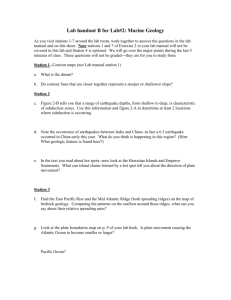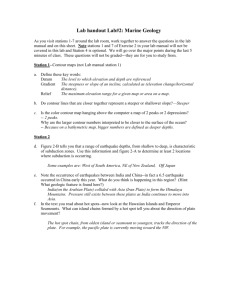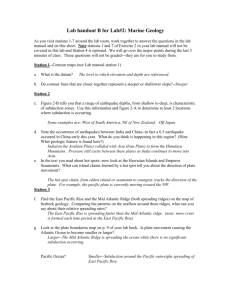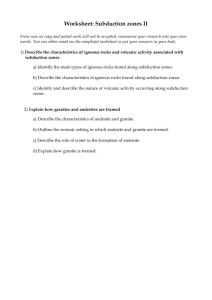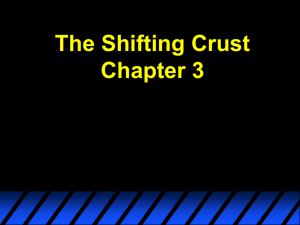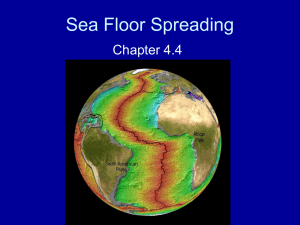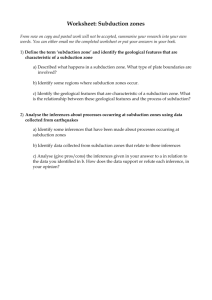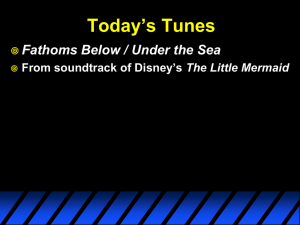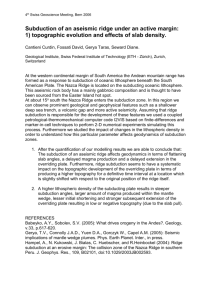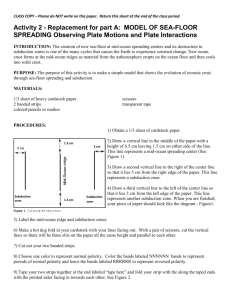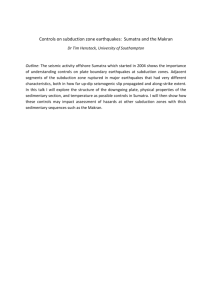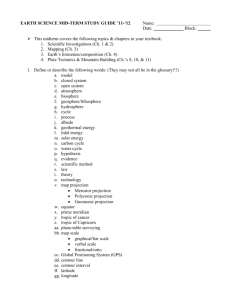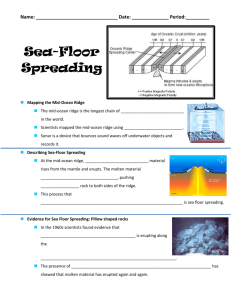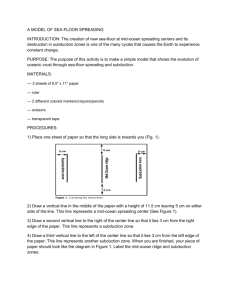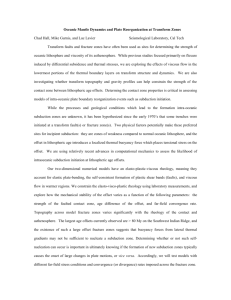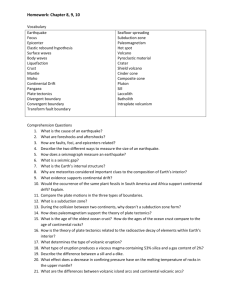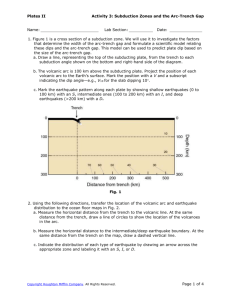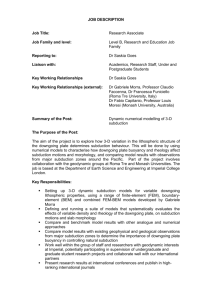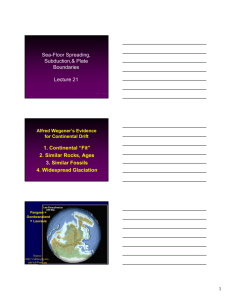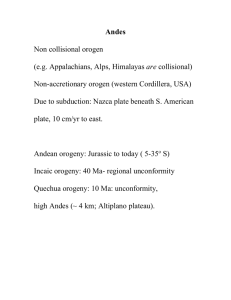Lab handout B for Lab#2: Marine Geology
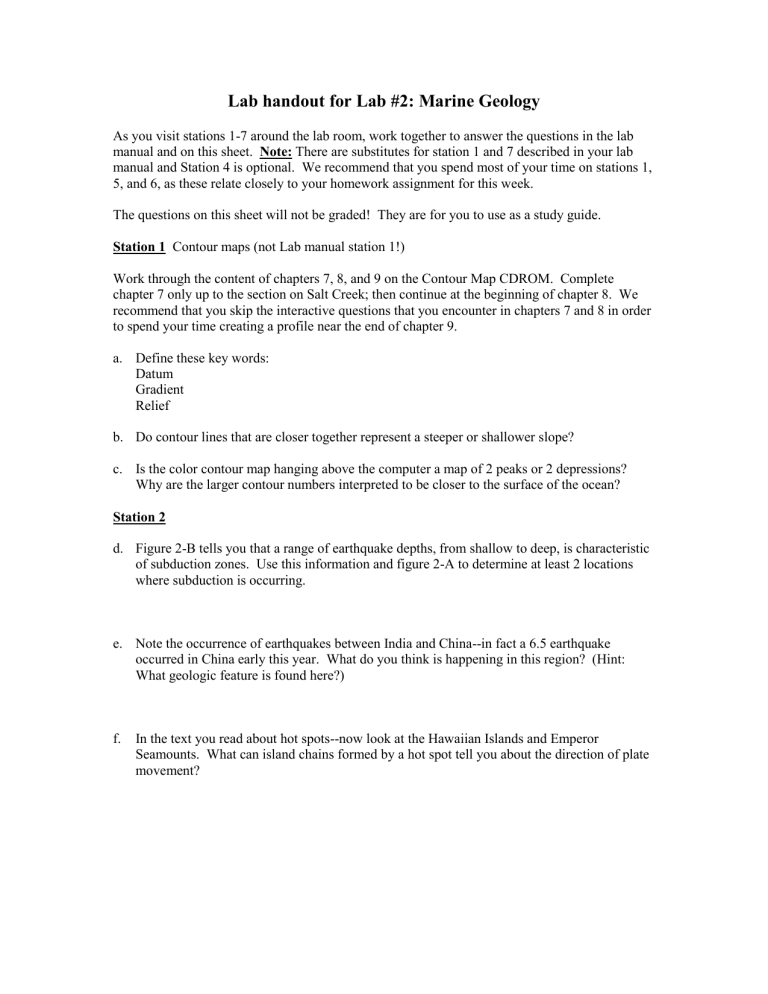
Lab handout for Lab #2: Marine Geology
As you visit stations 1-7 around the lab room, work together to answer the questions in the lab manual and on this sheet. Note: There are substitutes for station 1 and 7 described in your lab manual and Station 4 is optional. We recommend that you spend most of your time on stations 1,
5, and 6, as these relate closely to your homework assignment for this week.
The questions on this sheet will not be graded! They are for you to use as a study guide.
Station 1 Contour maps (not Lab manual station 1!)
Work through the content of chapters 7, 8, and 9 on the Contour Map CDROM. Complete chapter 7 only up to the section on Salt Creek; then continue at the beginning of chapter 8. We recommend that you skip the interactive questions that you encounter in chapters 7 and 8 in order to spend your time creating a profile near the end of chapter 9. a.
Define these key words:
Datum
Gradient
Relief b.
Do contour lines that are closer together represent a steeper or shallower slope? c.
Is the color contour map hanging above the computer a map of 2 peaks or 2 depressions?
Why are the larger contour numbers interpreted to be closer to the surface of the ocean?
Station 2 d.
Figure 2-B tells you that a range of earthquake depths, from shallow to deep, is characteristic of subduction zones. Use this information and figure 2-A to determine at least 2 locations where subduction is occurring. e.
Note the occurrence of earthquakes between India and China--in fact a 6.5 earthquake occurred in China early this year. What do you think is happening in this region? (Hint:
What geologic feature is found here?) f.
In the text you read about hot spots--now look at the Hawaiian Islands and Emperor
Seamounts. What can island chains formed by a hot spot tell you about the direction of plate movement?
Station 3 g.
Find the East Pacific Rise and the Mid Atlantic Ridge (both spreading ridges) on the map of bedrock geology. Comparing the patterns on the seafloor around these ridges, what can you say about their relative spreading rates? h.
Look at the plate boundaries map on p. 9 of your lab book. Is plate movement causing the
Atlantic Ocean to become smaller or larger?
Pacific Ocean?
Station 4 -----Optional
Station 5 i.
Why does oceanic crust tend to "sink" as it moves away from the spreading centers? j.
Would you expect to find a thicker accumulation of sediment at spreading centers or subduction zones? Why? k.
Does crystal grain size increase or decrease as you go deeper into the lithosphere at a spreading ridge? Why?
Station 6 l.
Why do most metamorphic rocks form at subduction zones, but not at spreading centers? m.
Why do explosive volcanoes occur near subduction zones? n.
What role does the relative density play at subduction zones?
Station 7 --Geology off the Washington Coast. (not station 7 from the lab manual) o.
Look for the following features on the physiographic map of the Pacific NW coast:
Canyon
Spreading ridge
Continental slope
Abyssal plain continental shelf transform fault continental rise o. Subduction is occurring off the coast----Speculate as to why there is no trench visible.
